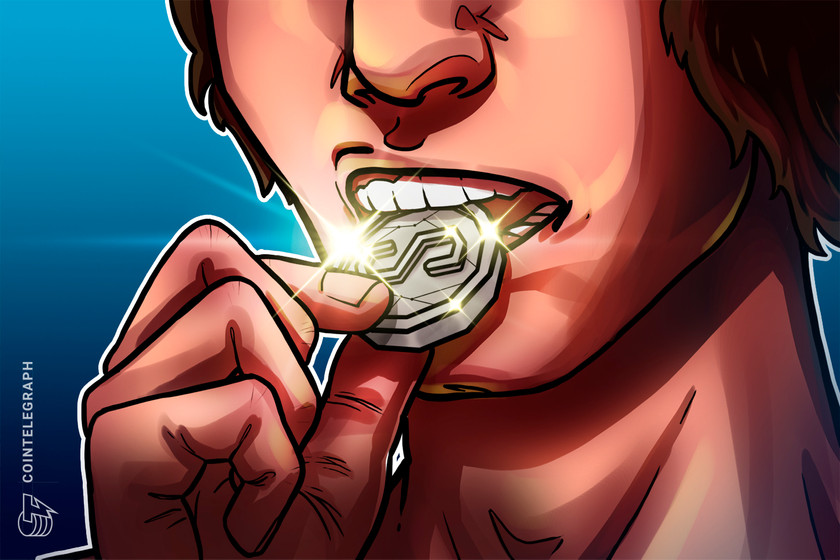Bitcoin rallies after Fed interest rate hike, but bears can still win Friday’s $1.76B options expiry


BTC bears aim for a $360 million profit in July 29’s $1.76 billion monthly options expiry, but the FOMC interest rate decision could play a decisive factor.
Bitcoin’s (BTC) price has been stuck in a descending channel since July 20 and it is currently heading toward the $20,000 support by the end of July. Adding to this bearish price action, BTC is down 50% year-to-date, while U.S. listed tech stocks, as measured by the Nasdaq-100 index, accumulated a 24% loss.


As the U.S. Federal Reserve tightens its economic policies by raising interest rates and scaling back debt asset purchases, risk assets have reacted negatively. Fed chair Jerome Powell is set to wrap up a two-day meeting on July 27 and market analysts expect a nominal 0.75% interest rate hike.
Tensions in Europe escalate as the Russian state-controlled gas company Gazprom is slated to cut supplies to the Nord Stream 1 pipeline starting on July 27. According to CNBC, the company blames a turbine maintenance issue, but European officials think otherwise.
Aiding tech stocks’ performance on July 27 was the U.S. Senate approval of the “Chips and Science” bill, which provides $52 billion in subsidies backed by debt and taxes for U.S. semiconductor production. An additional $24 billion of credits for the sector is estimated, aiming to boost the research to compete with China.
For these reasons, traders have mixed feelings about the upcoming Fed announcement and the impact of a global crisis on cryptocurrency markets. As long as Bitcoin’s correlation to traditional markets remains high, especially tech stocks, investors will seek protection by moving away from risk-on asset classes such as cryptocurrencies.
Bulls placed their hope on $24,000 and higher
The open interest for the July 29 Bitcoin monthly options expiry is $1.76 billion, but the actual figure will be lower since bulls were caught by surprise as BTC failed to break the $24,000 resistance on July 20.


The 1.18 call-to-put ratio reflects the $950 million call (buy) open interest against the $810 million put (sell) options. Nevertheless, as Bitcoin stands below $23,000, most of the bullish bets will likely become worthless.
For instance, if Bitcoin’s price remains below $23,000 on July 29, bulls will only have $145 million worth of these call (buy) options. This difference happens because there is no use in a right to buy Bitcoin at $23,000 if it trades below that level on July 29 at 8:00 am UTC.
Bears can secure a $360 million profit on Friday
Below are the four most likely scenarios based on the current price action. The number of options contracts available on July 29 for call (buy) and put (sell) instruments varies, depending on the expiry price. The imbalance favoring each side constitutes the theoretical profit:
- Between $19,000 and $20,000: 400 calls (buy) vs. 19,300 puts (sell). The net result favors bears by $360 million.
- Between $20,000 and $22,000: 3,900 calls (buy) vs. 11,800 puts (sell). Bears have a $230 million advantage.
- Between $22,000 and $24,000: 10,300 calls (buy) vs. 8,600 puts (sell). The net result is balanced between bulls and bears.
- Between $24,000 and $25,000: 14,400 calls (buy) vs. 7,100 puts (sell). Bulls have a $175 million advantage.
This crude estimate considers the call options used in bullish bets and the put options exclusively in neutral-to-bearish trades. Even so, this oversimplification disregards more complex investment strategies.
For example, a trader could have sold a call option, effectively gaining negative exposure to Bitcoin above a specific price, but unfortunately, there’s no easy way to estimate this effect.
Bitcoin bears need to pressure the price below $20,000 on July 29 to secure a $360 million profit. On the other hand, bulls can avoid a loss by pushing BTC above $22,000, balancing the valid bets from both sides. Bulls seem heavily vested to put their losses behind and start August with a clean sheet, but it could still go either way.
The views and opinions expressed here are solely those of the author and do not necessarily reflect the views of Cointelegraph. Every investment and trading move involves risk. You should conduct your own research when making a decision.




















